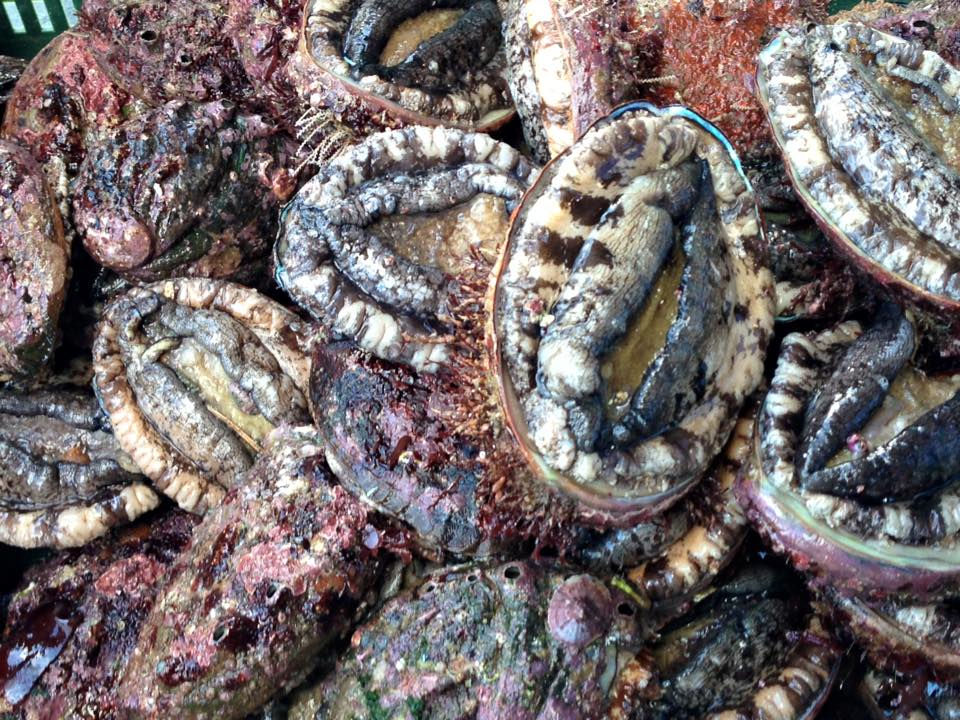

Chicken skirt steak is a very valuable cut of meat which only amounts to about 10 grams from a young, Sumita-raised chicken. The meat is fried without oil, and made in one of five ways: seasoned, onion salt, garlic, miso or chili. They’re all tender and juicy!

This meal is a real treat, as it uses 3 of Rikuzentakata’s famous marine products: scallops, wakame seaweed, and Takata-no-yume rice. It comes with raw scallops for sashimi, grilled scallops, fried scallops, wakame shabu-shabu (where you swish the seaweed in boiling broth before eating), wakame-topped rice, scallop soup, Japanese pickles, and a wakame dessert.

Ofunato is known as one of the leading saury fishing areas in the country. Sanma Ramen is a noodle dish made with these local fish. The dish is made-to-order; dried, mirin-flavored saury are grilled one-by-one, and placed on top of a bowl of soy sauce ramen. If you break the saury into small pieces and mix it with the soup, the flavor becomes even richer.



From “Hamano manabiya”


From “Hamano manabiya”

A piece of equipment that crushes gold ore for smelting.


Sengokubune(Japanese wooden ship)

Choanji Temple Gate in Hikoroichi of Ofunato, which was known as the Kesen carpenters’ best work, is a 20m high gate built completely with zelkova wood. The temple gate was constructed in 1798. In this era, zelkova was Date clan’s Otomeki, a tree the Date clan prohibited others from using. Even in Sendai, there were no buildings taller than the gate, so the gate was a symbol of defiance against the feudal lord.

This figurine has a certification with it stating, “Enshrinement of Wooden Buddha Figurine Permitted on March 29th 1702.“ Jinbee, a 5th generation Chida in Ryori, sent a request to Higashihonganji in Kyoto asking for the figurine. He left for Kyoto to pick it up, and carried it on his back to Ryori, Ofunato. The trip took him 6 months. The signature of Koji Sakyo, who is the sculptor of the Buddhist image, is on the request form the Chida family submitted.

A tool that picks up heavy nuggets of gold and washes away dirt and sand.

The drawing is "The Miracle pine" with Nanbutekki




There were used to be the long belt conveyor system, called “The Bridge of Hope” in Rikuzentakata.

Kenka Tanabata’s origins lie long ago, with some recording its history from around 1624-1644. When Kongoji Temple moved to the Imaizumi area, there was a mass Buddhist ritual held between the Imaizumi and Takata area to feed hungry ghosts. In order boost morale, people of Imaizumi started beating their drums like they were going to war. The theory is that those same drum beats are what are played in the Tanabata festival.

The Kesen Carpenters Folklore Museum was built in order to show future generations the impressive architecture skills of the Kesen carpenters. It was built with the architectural style of Kesen during the early Meiji era, and resembles a local private home. The materials used to build it are all local materials such as Kesan cedar.

Inside of The Kesen Carpenters Folklore Museum. An irori is a traditional Japanese sunken hearth. Used for heating the home and for cooking food.

A room that holds a Buddha statue.

These kenbai performers do not wear armor. Over a longsleeved dark blue shirt dyed with bold patterns, they wear a sleeveless cover with rounded shoulders trimmed with red piping. This is why they call it “Kata-Ikari,” which can be loosely translated as “fury of the shoulders.”



Fumonji Temple is located in Yonesaki in Rikuzentakata, and is temple number 29 in the Oshu Sanjusankannon (the 33 temples that are visited during the Oshu Kannon Pilgrimage). The main hall was reconstructed in 1877, and has become the standard style of Kesen temples.


At Koishihama Hotate Deck


It is an oddly shaped rock formation in the sea with three openings through which small pleasure boats can pass.








